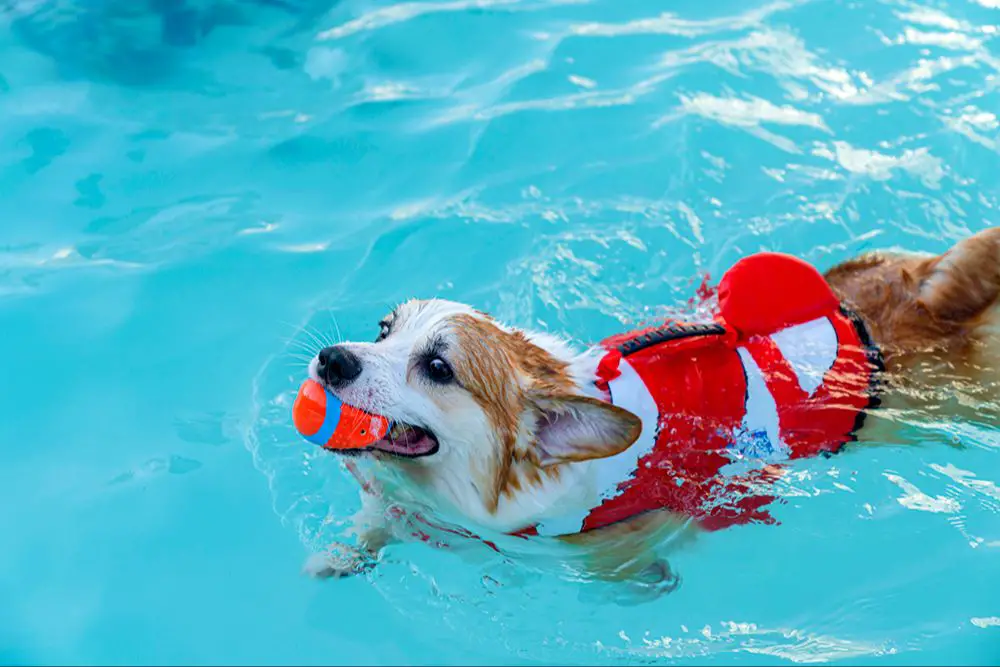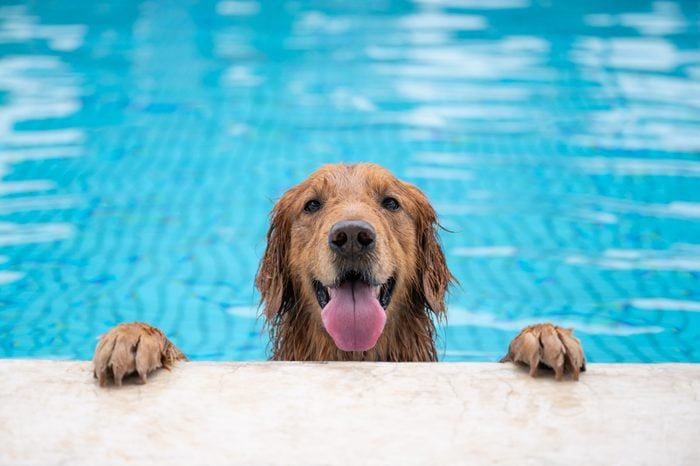Can Dogs Really Swim While Wearing Shoes?
As a dog owner, you likely enjoy fun activities like swimming with your furry friend. But you may wonder if your pooch can actually swim while wearing protective dog shoes. It’s a reasonable question, since anything on a dog’s paws could potentially interfere with their natural swimming stroke.
In this article, we’ll explore the main considerations around dogs swimming with shoes on. We’ll look at the purpose of dog shoes, how they can affect a dog’s swimming ability, tips for helping dogs adjust to swimming with footwear, and key safety precautions for water activities.
While shoes may present an initial challenge, you may be surprised to learn that most dogs can in fact learn to swim while wearing them! We’ll go over the pros and cons so you can decide if swim shoes are right for your pet.
Benefits of Dogs Swimming
Swimming is an excellent physical activity for dogs that provides many health and wellness benefits. One of the key advantages of swimming for dogs is physical exercise and conditioning. Swimming works a dog’s entire body and all major muscle groups, including the legs, shoulders, back, and core. It provides aerobic activity that increases endurance, builds muscle, and supports cardiovascular health. The buoyancy of the water also reduces stress and impact on a dog’s joints compared to more high-impact activities like running.
In addition to physical benefits, swimming provides important mental stimulation and is a fun recreational activity for dogs. The combination of physical exertion plus enjoyment and play makes swimming an enriching experience for a dog’s mind and body. It allows them to burn pent up energy. Swimming gives dogs an outlet for their natural enthusiasm and love of play.
Furthermore, swimming can provide valuable socialization opportunities for dogs if they are able to interact with other dogs in a pool, lake, or beach environment. Playing together in the water allows dogs to engage in social behaviors like chasing, fetching, and splashing. This helps dogs learn how to properly interact with others.

Potential Dangers of Swimming for Dogs
While swimming provides many health benefits for dogs, there are also some potential risks dog owners should be aware of. Some of the most common dangers associated with dogs swimming include:
Drowning – Just like humans, dogs can unfortunately drown while swimming. This risk is especially high in pools, lakes, oceans or fast-moving rivers where a dog may get tired and not be able to keep its head above water. Close supervision is key when dogs are swimming.
Ear infections – Swimmer’s ear is quite common in dogs that spend a lot of time in the water. Moisture and water can get trapped in a dog’s ears while swimming, creating a breeding ground for yeast and bacterial infections.
Ingesting water – Dogs that swallow too much water while swimming are at risk for upset stomach, vomiting or diarrhea. Additionally, water from some lakes or ponds may contain parasites like giardia that can cause gastrointestinal illness if ingested.
Purpose of Dog Shoes
Dog shoes serve some important purposes for canine health and safety. The main reasons dog owners invest in paw wear for their pets include:
Protect paw pads – Dog shoes shield paw pads from hot pavement, sharp rocks, thorns, salt, and other hazards. The foot pads are very sensitive and can get injured, cracked, or burnt without protection.
Traction on slippery surfaces – Booties give dogs better grip on smooth floors or icy ground, helping prevent slips and falls. The rubber soles provide more traction than bare paws.
Prevent injuries – Wearing shoes can safeguard dogs’ feet from cuts, abrasions, burns, frostbite, and other damage. They provide a barrier against the elements and terrain.
How Dog Shoes Affect Swimming
Wearing dog shoes while swimming can affect a dog’s ability to swim in a few key ways:
Extra weight on paws – Dog shoes add extra weight to a dog’s paws which requires them to work harder to paddle and propel through the water. The added weight of shoes makes it more tiring for dogs to swim distances.
Restrict movement – Many dog shoes are rigid and constricting by design to protect paws. However, this also restricts natural foot movement and flexibility while swimming. Dogs rely on free movement of their toes to paddle efficiently.
Buoyancy issues – Dog shoes can cause problems with buoyancy in the water. Shoes add weight but do not provide flotation, so they can make it harder for a dog to stay afloat and upright in the water. Proper flotation devices on shoes are important.
Considerations for Dog Swim Shoes
When choosing dog swim shoes, there are a few important factors to consider for your dog’s comfort and safety:
Proper fit – The shoes should fit snugly but not be constricting. Measure your dog’s paws and select a size accordingly. The shoes should not slide off or chafe.

Materials that won’t absorb water – Look for shoes made of mesh, neoprene or other waterproof fabrics that won’t get weighed down in the water. Avoid heavy materials like rubber that could impede swimming.
Allow flexibility – The shoes need to bend with your dog’s paws for natural movement. Make sure the sole is pliable. Rigid, inflexible shoes will hinder swimming.
With well-fitting, lightweight and flexible dog swim shoes, your pooch can comfortably and safely enjoy swimming, even with foot protection.
Training Dogs to Swim with Shoes On
Getting dogs comfortable with swimming while wearing shoes takes some training and patience. Here are some tips for helping dogs adjust to swimming with shoes on:
Acclimate to wearing shoes – Before attempting to swim, dogs should be comfortable just wearing shoes and walking around on land. Start with short sessions of 5-10 minutes wearing shoes and slowly increase the duration.

Practice in shallow water – Once the dog is OK with wearing shoes on land, begin practicing in shallow water where they can stand firmly. Let them explore and splash around while staying close to provide encouragement and rewards.
Use treats and toys as motivation – Bring along high value treats and favorite toys to reward and motivate the dog during training sessions. Gradually move to slightly deeper water as they gain confidence.
Go at the dog’s pace – Don’t force dogs into swimming right away if they seem unsure or nervous. Build up slowly so they associate shoes and water with positive experiences. Their comfort level is most important.
Supervise closely – Closely supervise all swimming sessions with shoes. Dogs may try removing shoes or act differently than usual when first learning. Caution is needed to prevent any injuries or panicking.
Patience is key – It takes many dogs time and repetition to feel at ease swimming in shoes. With a patient, gradual training approach focused on positive association, most dogs can learn this new skill.
Safety Tips for Dogs Swimming with Shoes
When allowing your dog to swim while wearing shoes, it’s crucial to keep safety top of mind. Here are some tips to help ensure your dog stays safe while enjoying the water with foot protection:
Supervise at All Times
Never leave your dog unsupervised in the water with shoes on. Even dogs that are strong swimmers can run into issues, so make sure you are watching them at all times. Stay within reaching distance in case you need to assist.
Avoid Areas with Strong Currents
Take your dog to swim in calm areas without strong currents. Fast moving water can sweep a dog away and make swimming difficult even without shoes. The shoes may make treading water more challenging.
Watch for Signs of Struggle/Fatigue
Keep an eye out for any signs your dog is struggling or getting tired while swimming with shoes. Dogs that normally swim with ease may have more difficulty gaining traction and buoyancy with clunky footwear. Be ready to help them out of the water at the first hint of struggle.

The Bottom Line
When evaluating whether or not dogs should wear shoes when swimming, there are pros and cons to consider. On the one hand, dog shoes provide protection for a dog’s paws from rough surfaces and hot sand. They allow dogs to comfortably play in the water without risking cuts, scrapes or burns on their paw pads. However, dog shoes can also make swimming more challenging for dogs. The shoes add drag and weight in the water, which dogs are not used to. This can make swimming tiring and stressful for some dogs.
In general, most experts recommend acclimating dogs to swim without shoes first, and then gradually introducing shoes. Look for thin, breathable, lightweight swim shoes that secure well but don’t constrict movement. Avoid shoes with thick soles that add a lot of drag. Take things slowly, monitor your dog’s comfort level, and be ready to ditch the shoes if needed. With patience and positive reinforcement training, many dogs can learn to swim just fine with shoes on. But pay attention to signs of struggle or distress. If your dog seems hampered by swim shoes, it’s best to let them swim without for safety and enjoyment.
Additional Resources
For more information on dogs and swimming, check out these helpful resources:
- Swimming for Exercise – American Kennel Club
- Can Dogs Swim? – Rover.com
- How to Teach a Dog to Swim – The Spruce Pets
When it comes to swim shoes for dogs, here are some top recommended products: